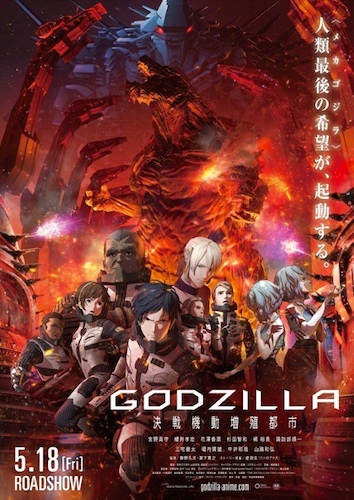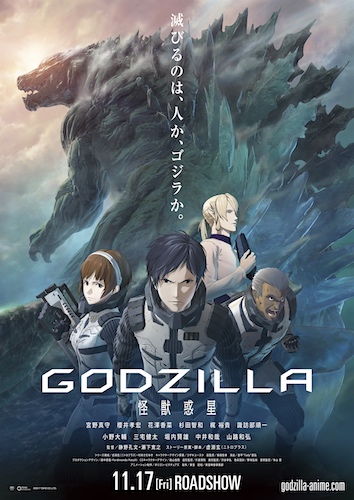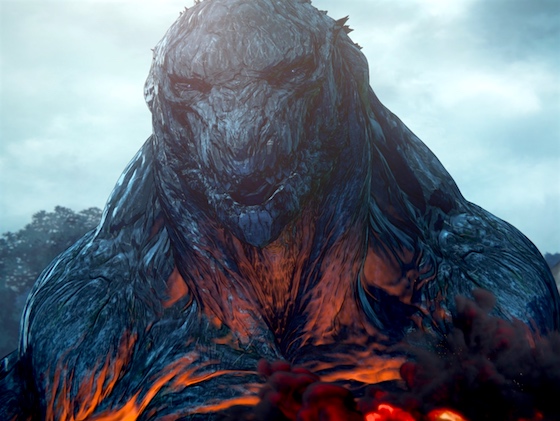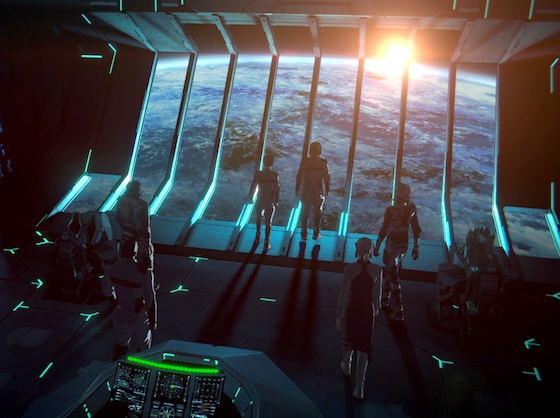Hiroyuki Seshita & Kôbun Shizuno | 91 mins | streaming (HD) | 16:9 | Japan / English | 12

Picking up where the previous film left off, this concluding instalment in the anime Godzilla trilogy (which also doubles as the 32nd official Godzilla movie) sees the eponymous kaiju lying dormant while plans swing into action to bring Ghidorah, a being from another dimension who’s worshipped as a god by some, into our dimension, where it will eat Godzilla and then Earth itself.
Yeeeaaah.
But before we get to the headline monster mash, there’s an attempt at a plot. By the end of the last film, the alliance between humans and a couple of alien races who’d helped us out was looking a bit shaky. What once looked like it might make for a Battlestar Galactica/Babylon 5-style conflict has turned out to be nothing so developed, and in this final film it noodles along, driven by minor supporting characters we have zero attachment to; a something-and-nothing plot line that kills time until it’s summarily wiped away. Meanwhile, down on Earth, we’re treated to dozens of scenes in which the trilogy’s equally unmemorable lead characters wander around waffling Religious Studies 101-level stuff about religion as propaganda and a manipulation tool. At one point a character talks about soup as an analogy for, like, society or something, coming to the observation that “unlike the soup, we have free will.” It’s a deep philosophical movie, man. About as deep as a bowl of soup.
All the while, we’re made to wait for the guy we came to see to wake up. Yes, Godzilla literally sleeps through the first half of the movie. Well, I can’t say I blame him.

On the bright side, it does eventually get to some good bits (that’s more than I’d say about the preceding instalment). There’s a sequence where the alien death cult religion summons Ghidorah, who initially manifests as some kind of shadow-demon that begins massacring everyone in the room, which is all quite creepy. It’s followed by a large-scale sequence where Ghidorah’s glowing energy snake-dragon form emerges from a space-time singularity and destroys the humans’ spaceship in some kind of temporally-messed-up way, which is also quite striking. You have to appreciate these individual sequences almost in isolation, because the plot they’re part of is a load of muddly claptrap.
Then there’s the climax, in which we get to witness a mountain-sized dinosaur-ish monster with atomic breath (Godzilla) battle an interdimensional three-headed dragon-snake apparently made of glowing yellow light (the trilogy’s take on Ghidorah). It has its moments, but it’s overlong and mixes in a bunch of the cod-scientific wannabe-philosophical gubbins too, which takes the wind out of its sails somewhat.
There have been some interesting ideas tucked away in this trilogy, both in how it reimagined the kaiju and their mythologies, and in the brand-new stuff it attempted to introduce with the alien races and their beliefs. Unfortunately, that promise has been lost under unengaging characters, poorly defined relationships, and the kind of philosophising you might expect from a Sixth Form student. It was bold to try to take the Godzilla franchise in a new direction, but that boldness feels squandered.

Godzilla: The Planet Eater is available on Netflix now.






